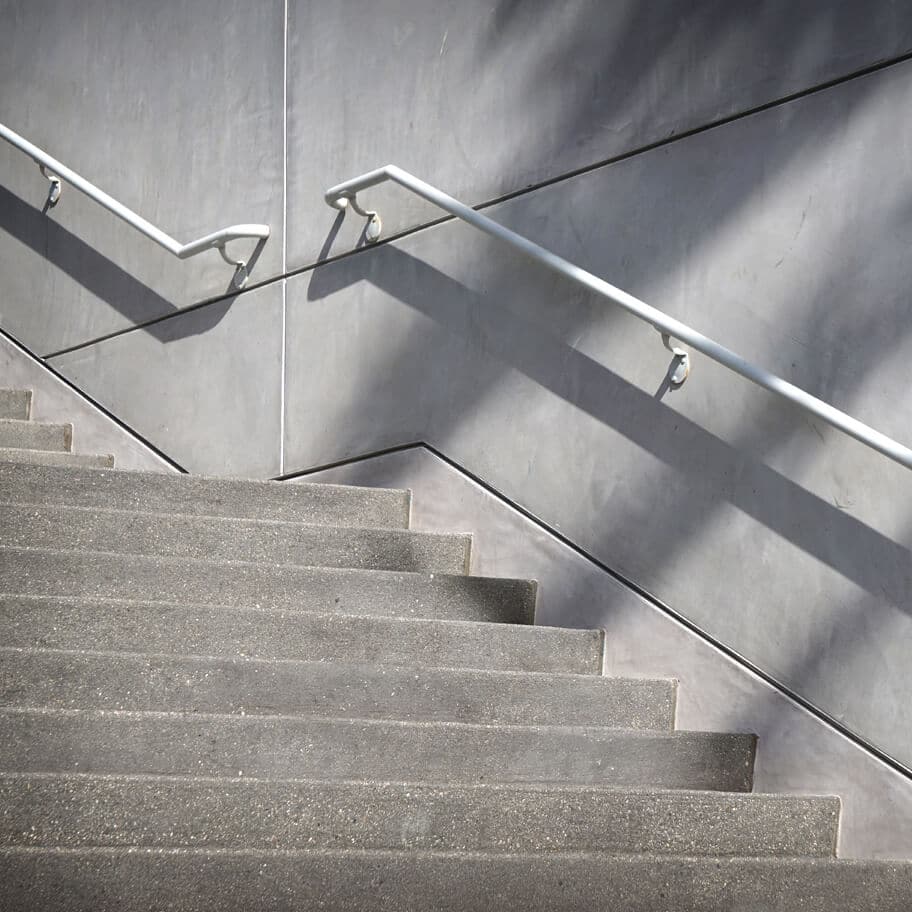Common Handrail Accidents
Common cases of handrail accidents are; handrail on a stairs that is designed to provide a grip is either broken or missing and a fall accident occurs, or cases where a guardrail, that is in place to provide a barrier between a person and an unsafe area, is broken or missing leading to an accident and injury.
Handrails are put in place as a safety feature to reduce the risk of accidents and injury. Broken handrails are a common cause of accidents with the main type being slips, trips and falls. These accidents can happen anyway and may lead to injuries. In many cases what could have been a minor accident is made worse as a result of a broken, defective or faulty handrail.
Lack of maintenance is a common issue that can lead to accidents. The persons responsible for the maintenance of handrails in public use may be held liable in cases where negligence in relation to maintenance have led to an accident. Without ongoing maintenance railings may become loose over time and detach from their fitting.
Who is Responsible?
It may be difficult to determine who is responsible for the broken handrail. This can vary depending on the setting and environment they are in. In general it is the property owners who are at fault if an accident occurs on their premises. If they are aware of the hazard but have not displayed a warning sign then it is very clear that they were responsible for the injuries sustained.
- If the handrail is broken on the premises of a shop or restaurant then the owner is responsible for ensuring that any risks are eliminated. This is known as occupier’s liability.
- In a rented building, the landlord may be responsible. Any faults or hazards noticed by tenants should be reported to the landlord as soon as possible.
- In a work environment, the employer has a duty of care to ensure that they are providing a safe environment for their employees. They must follow the guidelines set out in the Safety, Health and Welfare at work act 2005. This Act outlines the various duties of an employer when it comes to the safety of staff. Employees also have a responsibility to report any hazards noticed by them.
Common Injuries
Common injuries resulting from a broken handrail accident include:
Causes
Whether it’s a missing or broken handrail there may be a number of different elements at play that led to your accident. These accidents can happen in all locations whether it be at work or in a public place. Some of the most common causes of claims for/injuries sustained from broken or missing handrails are:
- Missing or broken handrails on stairwells.
- Missing or broken handrails on steep walkways.
- Handrails not installed at the correct height, rendering it not fit for purpose.
- Poor maintenance of handrails in public areas.
- Failure to repair a broken handrail.
- Failure to install a handrail where one is needed.
- Handrail became loose and broken whilst in use.
What to do after an accident at work*?
Following an accident at work, there are a number of steps you should follow:
-
Seek medical attention
Your health is your wealth and should be your first priority. Immediately after an accident at work, take a second to assess yourself to determine if you have any injuries and seek the relevant medical attention. If you have sustained a serious injury ensure that you contact an ambulance to attend the scene.
For minor injuries, you must remember that minor injuries where you ‘feel fine’ could progress to more serious injuries in the future. In this case it is always better to be safe than sorry and advisable that you go to your nearest accident and emergency (A&E) or local GP to be checked out.
-
Report the accident
It is critical to report the accident to your superior, i.e. a supervisor or manager on site. It doesn’t matter how small you think the accident may be. By law, accidents at work are required to be reported if the person is injured and can’t perform their daily work tasks for more than three days. Make sure to fill out an Accident Report Form. This can be used for reference in any medical examination and will also prevent any similar accidents from happening in the future.
-
Identify any witnesses
If possible, try to collect the contact details of anybody that witnessed your accident. This may be of use if you do decide to pursue a workplace accident claim. It is also useful to find out if there is any CCTV in the area where your accident happened.
-
Document the incident
It is important that you collect all the relevant information in connection with your accident:
- How the accident happened
- Details of any witnesses
- If there are any CCTV recordings of your accident
- Take pictures of where the accident happened and what caused your accident
-
Speak to a workplace accident solicitor
If you are considering moving forward with a workplace accident claim for any personal injuries sustained, it is advisable that you speak with a workplace accident claims solicitor as soon as possible. If you are proceeding with a claim, the first step will be submitting your claim to the Personal Injuries Assessment Board (PIAB) for assessment. A workplace accident solicitor can help you in preparing your application to the Personal Injuries Assessment Board (PIAB) and ensure that you follow the process in the correct format, meaning that you can move forward with your claim quickly without unnecessary delays.
It is important to remember to keep copies of any expenses that you have incurred as a result of the accident. It is also imperative to retain copies of medical reports or incident report forms where possible as you will need them when making a claim.

